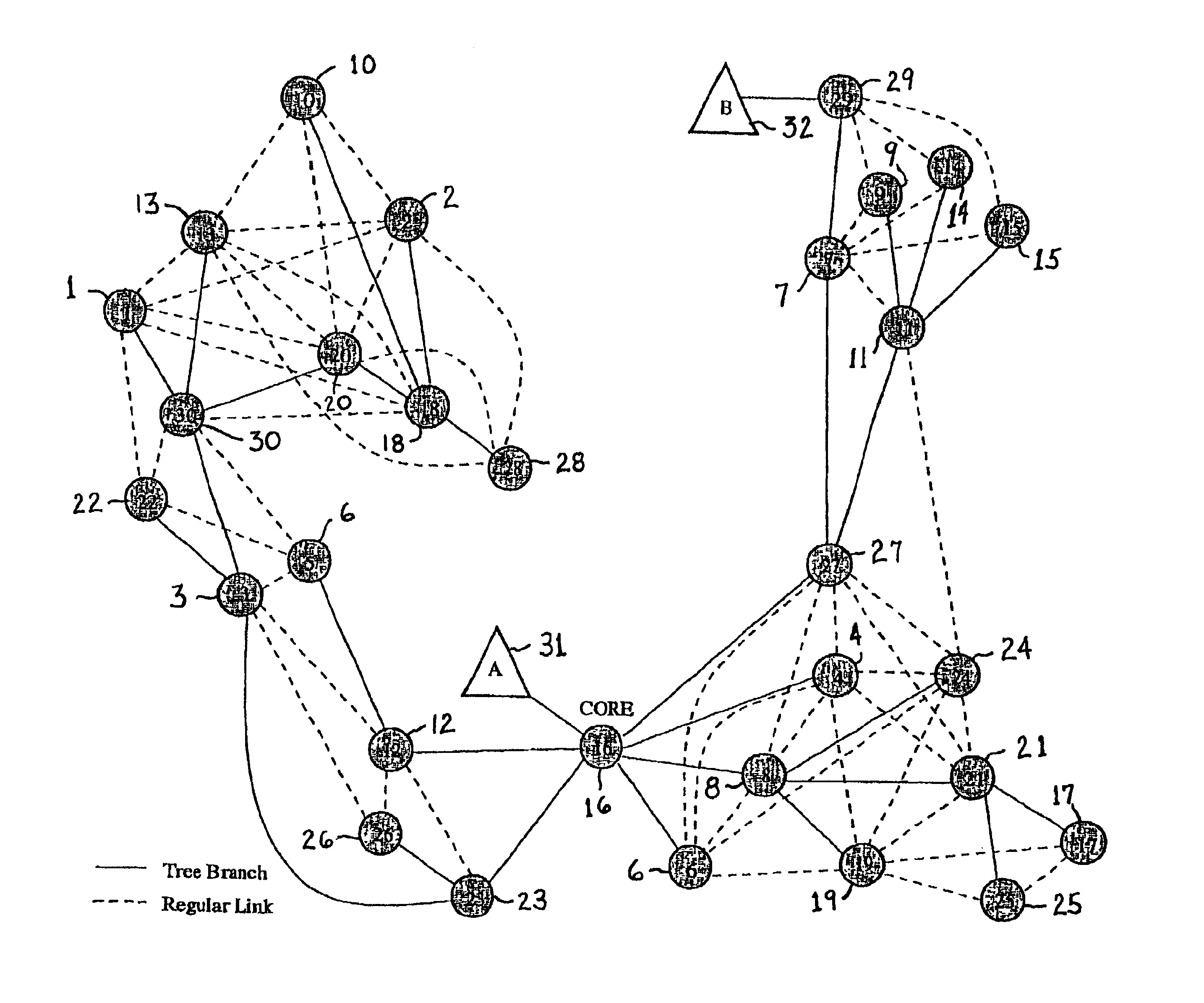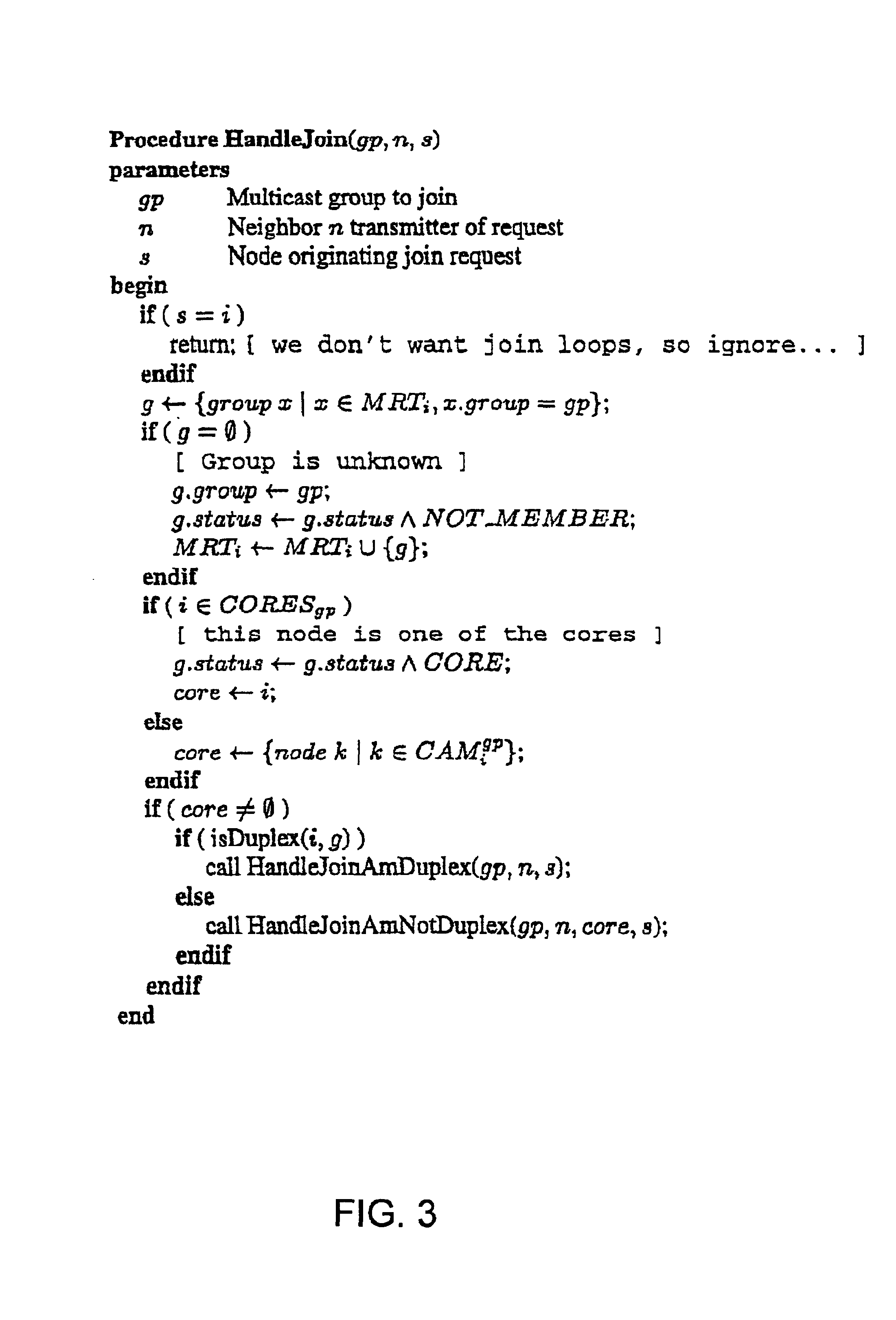Core assisted mesh protocol for multicast routing in ad-hoc Networks
a mesh protocol and network technology, applied in data switching networks, frequency-division multiplexes, instruments, etc., can solve problems such as packet forwarding or process not being prevented, and achieve the effect of enriching connectivity
- Summary
- Abstract
- Description
- Claims
- Application Information
AI Technical Summary
Benefits of technology
Problems solved by technology
Method used
Image
Examples
Embodiment Construction
[0046]Referring more specifically to the drawings, for illustrative purposes the present invention is embodied in the apparatus generally shown in FIG. 1 through FIG. 22, excepting FIG. 2 and FIG. 6 which depict conventional protocols for comparative purposes. It will be appreciated that the apparatus may vary as to configuration and as to details of the parts, and that the method may vary as to the specific steps and sequence, without departing from the basic concepts as disclosed herein.
1. Overview of CAMP
[0047]The present invention focuses on multicast communication in ad hoc networks and presents a generalization of routing trees into graphs, referred to as multicast meshes. These multicast meshes provide greater connectivity than trees while preventing the occurrence of long-term or permanent routing loops. A protocol, referred to as Core-Assisted Mesh Protocol, CAMP, is described for establishing and maintaining routing structures for multipoint communication in an ad hoc netw...
PUM
 Login to View More
Login to View More Abstract
Description
Claims
Application Information
 Login to View More
Login to View More - R&D
- Intellectual Property
- Life Sciences
- Materials
- Tech Scout
- Unparalleled Data Quality
- Higher Quality Content
- 60% Fewer Hallucinations
Browse by: Latest US Patents, China's latest patents, Technical Efficacy Thesaurus, Application Domain, Technology Topic, Popular Technical Reports.
© 2025 PatSnap. All rights reserved.Legal|Privacy policy|Modern Slavery Act Transparency Statement|Sitemap|About US| Contact US: help@patsnap.com



